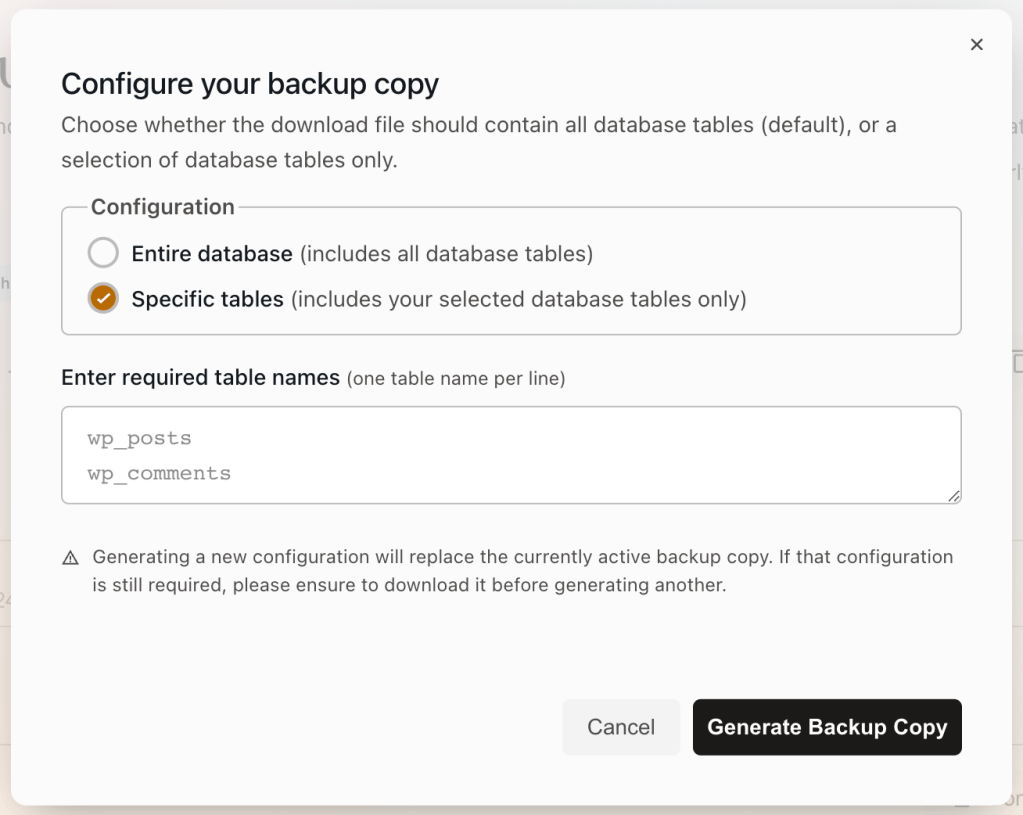Download a partial database backup
Download one or more specific tables from a database backup copy of a WordPress single site or a WordPress multisite environment.
Partial database backup copies for specific tables will include data for the requested tables, and commented out lines for all other tables that exist in the database.
Limitation
Partial database backup copies cannot be generated for databases that are large or complex.
Access
In the application view of the VIP Dashboard:
- Select an environment from the environment dropdown located at the upper left of the VIP Dashboard.
- Select “Database” from the sidebar navigation at the left of the screen.
- Select “Database Backups” from the submenu.
- Select the date of the backup for download. Database backups are grouped by date, and dates can be selected from buttons in a carousel labeled “Select a date“. The buttons also display the number of backups available for download for each date.
- Select the “Configure Download” button to the right of a database backup.
- In the “Configure your backup copy” modal, select “Specific tables“.
- In the text field below “Enter required table names”, list the database tables to include in the partial database backup copy. Add one table name per line in the text field.
- Select the “Generate Backup Copy” button to the right of a database backup.
The button label will display the text “Preparing Backup” while the database backup file is being prepared for download.
Backup files for larger databases will take a longer time to prepare. - The button label will display the text “Download” when the database backup file is ready for download. Select “Download” to download the file to the user’s local machine.

Last updated: November 26, 2024